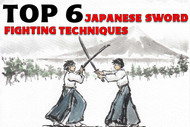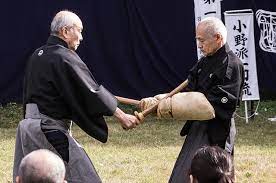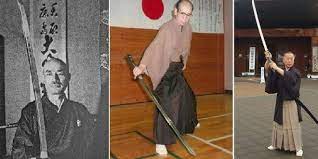Top Six Japanese Sword Fighting Techniques
Posted by SwordsSwords on Sep 25th 2023
Japanese sword fighting, also known as kenjutsu, has a long and storied history dating back centuries. At the heart of kenjutsu are the basic concepts and techniques that samurai warriors used in battle.
Some of the fundamental concepts include proper stances, strikes, blocks and parries. Mastering these basic techniques was essential for samurai to defend themselves and engage in combat.
Of course, to practice Japanese sword martial art, one needs the proper equipment. The most iconic weapon of the samurai is the katana, a curved, single-edged sword that was traditionally worn edge-up for quick drawing.
The katana has a long blade that tapers to a sharp point, making it a deadly weapon both for slashing and thrusting attacks.
In addition to the katana, samurai also carried a shorter blade known as a wakizashi for close-quarters fighting.
Wearing light armor such as a kusari katabira mail shirt was also common to protect vital areas. With an understanding of basic concepts and the necessary equipment, one can begin to learn the fundamentals of Japanese sword technique as practiced by samurai warriors.
In
this article, we will delve into some of the most prominent Japanese sword techniques
used in martial arts, shedding light on their origin and core principles.
Kenjutsu- Sword Fighting Japan
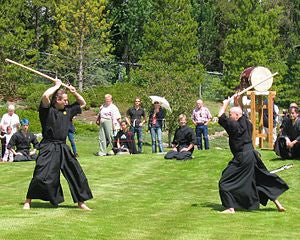
Japanese sword martial arts -Kenjutsu, often referred to as the "Art of the Sword," holds the distinction of being one of the oldest and most revered Japanese martial arts. Its origins can be traced back to Japan's feudal era, with roots dating as far as the 8th century.
The earliest forms of Kenjutsu emerged during the Kamakura period (1185-1333). During that time, the country had civil unrest and frequent warfare.
Over time, various ryuha (schools) developed their own techniques, emphasizing precision, fluidity, and mental discipline.
The Essence of Kenjutsu
At its core, Kenjutsu is a holistic martial art that encompasses not only physical techniques but also mental and spiritual aspects. It teaches practitioners to forge a deep connection between themselves and the katana, the iconic Japanese sword.
Katana Techniques: Key elements of Kenjutsu:
●Katas: These are pre-arranged sequences of movements and strikes that simulate combat scenarios. Katas serve as a fundamental training tool, allowing practitioners to refine their techniques, timing, and precision.
●Suburi: Suburi are repetitive sword swings and strikes performed with precision and control. They help build strength, flexibility, and muscle memory, essential for effective swordplay.
●Mental Discipline: Kenjutsu places a strong emphasis on mental focus, concentration, and awareness. Practitioners must cultivate a state of zanshin, or "remaining mind," where they are fully present in the moment, anticipating and reacting to their opponent's actions.
●Kiai: The kiai is a loud shout or vocalization performed during strikes. It is not only a means of intimidating opponents but also a way to channel one's energy and focus.
Iaijutsu or Iaido- The Art of Drawing and Striking
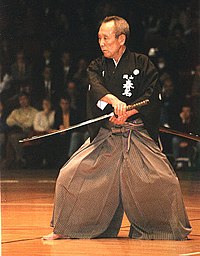
Iaijutsu, or its modern counterpart Iaido, focuses on the swift and precise draw of the katana (Japanese sword) and immediate response to threats.
Iaijutsu was developed as a response to surprise attacks, where samurai needed to draw and strike in a single, fluid motion. It is said that the legendary samurai, Miyamoto Musashi, played a pivotal role in the development of Iaijutsu techniques.
The Essence of Iaijutsu
The essence of Iaijutsu lies in its ability to execute a devastatingly effective strike from a resting position, symbolizing the readiness and precision of a true samurai.
What is Iaido?
Iaido, on the other hand, is the modern counterpart of Iaijutsu. It emerged during Japan's transition from the fe
udal era to the modern age, particularly in the late 19th and early 20th centuries. Iaido retains the core principles of Iaijutsu but places greater emphasis on personal development, inner growth, and the pursuit of perfection.
Key Differences Between Iaijutsu and Iaido:
1.Philosophy: Iaijutsu was primarily developed for combat and self-defense, focusing on the practical aspects of swordsmanship. Iaido, in contrast, places a stronger emphasis on personal development, mental discipline, and the cultivation of a strong spirit.
2.Training: Iaijutsu often involves a more traditional and rigorous approach to training, with a focus on practical combat techniques. Iaido places greater importance on kata practice and meditation, encouraging practitioners to refine their technique and character simultaneously.
3.Uniform: Iaijutsu practitioners may wear traditional samurai attire. In Iaido, a specific uniform called the "keikogi" is commonly worn, reflecting its modernized approach.
Kendo- The Way of the Sword
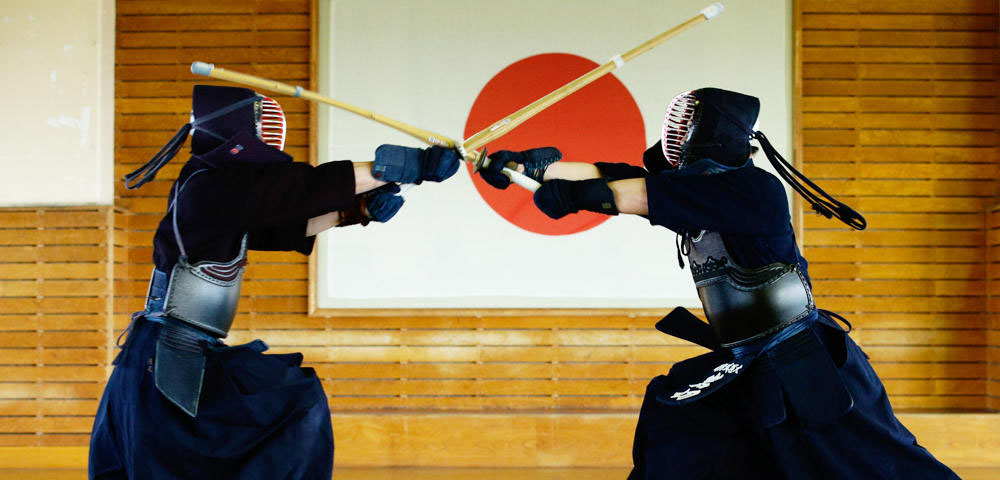
Kendo's history can be traced back to the ancient Japanese sword martial art of Kenjutsu, which was practiced by samurai warriors for centuries.
However, it wasn't until the late 19th and early 20th centuries, during Japan's Meiji Restoration, that Kendo took its modern form.
At this time, the government introduced standardized rules and regulations, transforming Kendo into a safe and organized martial art.
The Essence of Kendo
Kendo is distinguished by its use of bamboo swords (shinai) and protective armor (bogu).
The objective is to strike one's opponent with precision and control, earning points based on the accuracy and form of each strike.
Kendo practitioners engage in spirited sparring sessions (keiko) and practice specific forms (kata) to refine their technique.
The Philosophical Aspects:
Kendo places a strong emphasis on character development and the cultivation of virtues such as respect, honor, and discipline.
It follows the principles of bushido, the samurai code, which emphasizes integrity, self-control, and moral courage.
Through Kendo, practitioners not only improve their physical fitness but also their mental resilience.
The Path of Self-Improvement:
Kendo offers more than just physical exercise; it provides a path of self-improvement and personal growth.
Practitioners learn to face challenges with composure and to embody the values of etiquette and mutual respect. The art teaches individuals to overcome adversity and to strive for excellence in both their Kendo practice and their daily lives.
Ono-ha Itto-ryu- One Sword, One Blow
Ono-ha Itto-ryu traces its roots back to the early 17th century, during Japan's Edo period. It was founded by Ono Tadaaki, a master swordsman renowned for his one-strike principle: "One Sword, One Blow."
The Essence Ono-ha Itto-ryu
At the core of Ono-ha Itto-ryu lies the concept of economy of motion.
Practitioners focus on minimizing unnecessary movements, maximizing efficiency, and achieving victory through impeccable timing and precision.
Kendoka (practitioners of the art) aim to incapacitate their opponents with a single, well-placed strike, echoing the samurai ideal of ending conflicts swiftly and decisively.
Key Techniques:
Ono-ha Itto-ryu places a strong emphasis on specific techniques that are essential to mastering the one-strike principle. Some of the core techniques include:
●Ippon-me Mae:A straightforward strike to the opponent's head.
●Nihon-me Ushiro: A rearward strike, executed while retreating.
●Sanbon-me Uchi Otoshi: A downward strike performed in a diagonal motion.
●Gohon-me Sayu Sune Uchi: A strike targeting the opponent's shins
Preservation of Ono-ha Itto-ryu
One of the distinguishing characteristics of Ono-ha Itto-ryu is its commitment to preserving traditional techniques.
It places great importance on maintaining the authenticity of the art, ensuring that generations of practitioners continue to benefit from the wisdom of its founder.
Muso Jikiden Eishin Ryu- The Traditional Draw and Cut
Muso Jikiden Eishin Ryu, often referred to simply as Eishin Ryu or MJER, boasts a lineage dating back to the early 17th century.
Founded by Hasegawa Chikaranosuke Eishin, this traditional Japanese sword martial art traces its origins to the tumultuous Edo period, when the samurai needed not only martial prowess but also mental discipline.
The Essence of Muso Jikiden Eishin Ryu
Mindful Presence (Zanshin):
At the heart of Eishin Ryu is the concept of "zanshin," which refers to a state of mindful presence.
Practitioners are taught to maintain continuous awareness before, during, and after executing a technique.
This heightened state of consciousness is not just about physical presence but also mental and emotional awareness, fostering a deep connection to the moment.
The Iaido Aspect:
While Eishin Ryu encompasses various aspects of swordsmanship, it is primarily an iaido style. Iaido is the art of drawing and cutting with the katana in one seamless motion.
This aspect of the art is not just about combat; it is a practice in mindfulness, control, and mastery over one's movements.
Unity of Mind, Sword, and Body:
Eishin Ryu adheres to the principle of "Ki Ken Tai Ichi," emphasizing the unity of mind, sword, and body.
Practitioners strive to harmonize their mental focus, physical movements, and spiritual presence, creating a holistic approach to swordsmanship that extends beyond the dojo.
Tameshigiri- The Art of Test Cutting
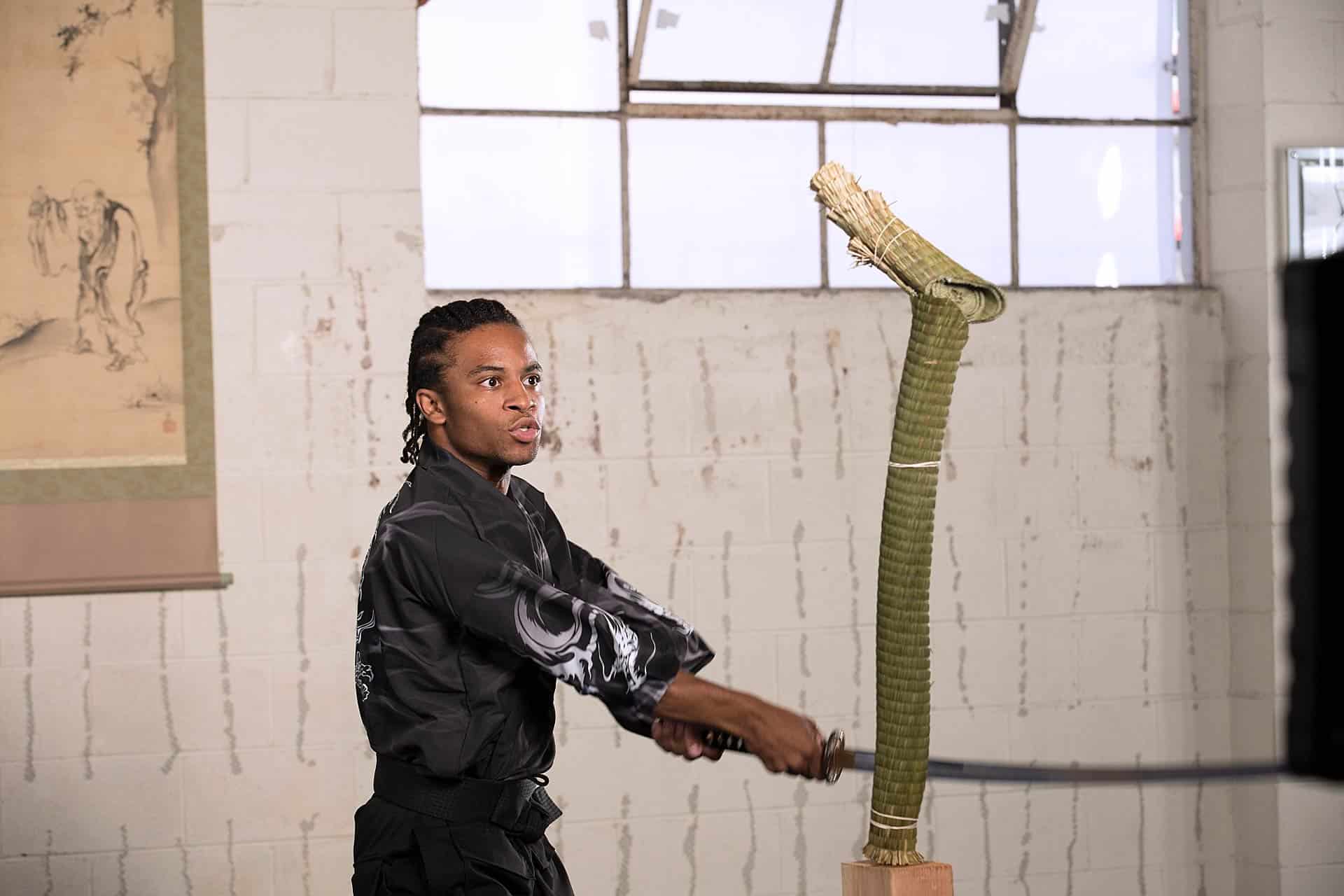
Tameshigiri, which means "test cutting" in Japanese, has its origins in feudal Japan.
Samurai warriors needed a way to assess the sharpness and effectiveness of their swords, especially after blades were forged or sharpened. Tameshigiri emerged as a practical solution to this need.
Samurai would test their swords on various cutting targets, including rolled mats of straw (tatami omote), bamboo, or even animal carcasses. These targets simulated the resistance and density of human bodies and allowed the samurai to evaluate the sword's cutting ability in realistic katana combat
The Essence of Tameshigiri
At its core, Tameshigiri is about more than just testing the sharpness of a sword. It embodies the spirit of precision, discipline, and mastery. The essence of Tameshigiri lies in its ability to connect modern practitioners to the traditions and craftsmanship of the samurai.
Philosophy of Tameshigiri:
It encourages practitioners to seek perfection in their technique, promoting discipline, patience, and mindfulness. The art emphasizes the importance of respect for the sword and its history, as well as for the traditions and teachings passed down through generations.
Key Techniques of Tameshigiri:
Tameshigiri involves a set of techniques designed for accurate and effective test cutting. Some of the key techniques include:
1. Iaido (Quick Draw): Tameshigiri often incorporates iaido techniques, where the practitioner draws the sword swiftly from its scabbard and delivers a precise cut with a single, fluid motion.
2.Target Selection: Choosing the right target is crucial in Tameshigiri. Different materials offer varying levels of resistance, allowing the practitioner to assess the blade's sharpness and their own cutting technique.
3. Angle and Precision: The angle and precision of the cut are paramount. Practitioners aim for clean, straight cuts that exhibit control and skill.
Japanese Sword Fighting for Beginners: Mastering the Art
Japanese sword fighting is not just about learning to wield a sword; it’s a holistic pursuit that hones the body, mind, and spirit. With the right guidance, respect for tradition, and unwavering commitment, beginners can embark on a transformative journey, mastering the art of Japanese swordsmanship and embracing the legacy of the samurai.
Let’s unravel the essential aspects of Japanese sword fighting to guide beginners toward an enriching experience.
Understanding the Legacy:
Japanese swordsmanship, kenjutsu or kendo, embodies the samurai spirit. It’s more than just combat; it's a philosophy rooted in discipline, respect, and self-improvement. Embracing this legacy enhances not just your physical skills, but your mental and spiritual well-being.
The Weapon: Katana and Beyond
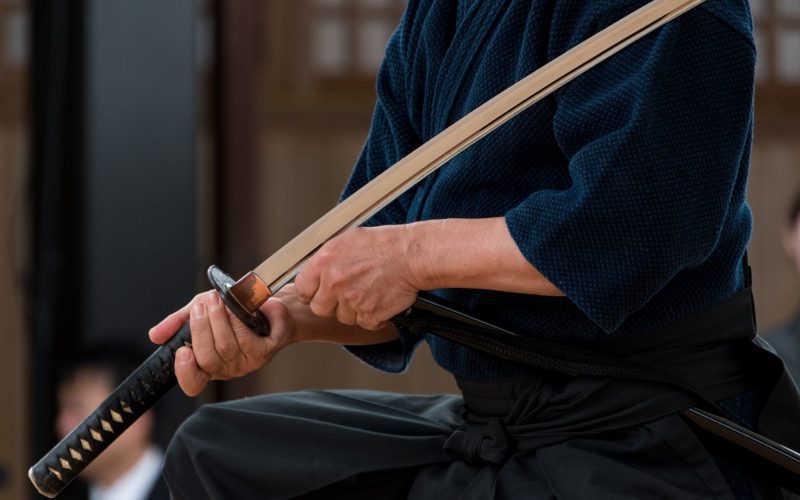
Central to Japanese swordsmanship is the katana. Understanding its parts, from the blade (Ha) to the scabbard (Saya), is foundational. However, beginners should also explore related weapons like Wakizashi (short sword) and Tanto (dagger) to grasp the complete spectrum of techniques.
Basic Techniques and Movements:

Beginners start with fundamental stances and footwork, crucial for balance and mobility. Basic sword techniques like downward cuts (Shomenuchi) and diagonal cuts (Diagonal Kesagiri) are practiced meticulously. Blocking techniques (Uke-waza) and parries (Kaeshi-waza) are equally important, forming the building blocks of effective swordsmanship.
If you are into Japanese sword fighting, check out our detailed blog on: 7 Basic Katana Techniques and Katana Sword Forms.
Mental Focus and Discipline:

Japanese sword fighting places immense emphasis on mental focus, often referred to as ‘Mushin’ or ‘Zanshin.’ Mushin is a state of mind where thoughts and emotions are set aside, allowing instinctual and efficient movements. Zanshin, on the other hand, is the state of awareness, teaching practitioners to remain alert even after an attack.
Respect for Tradition:
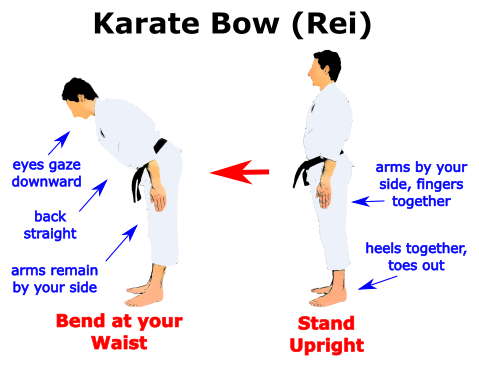
Respect for one's sensei (teacher) and fellow practitioners is paramount. Etiquette and rituals, such as bowing (Rei), are integral to Japanese swordsmanship. Understanding and embracing these traditions not only foster a respectful atmosphere but also deepen the practitioner's connection with the art.
Safety and Equipment:

Safety is paramount in Japanese sword fighting. Beginners must wear appropriate protective gear, including a helmet (Men), chest protector (Do), gloves (Kote), and groin guard (Tare). Additionally, maintaining the sword's sharpness and proper care of equipment is essential for safe practice and longevity.
Japanese
swordsmanship is a lifelong journey. Beginners should
approach it with patience and dedication, understanding that mastery comes with
consistent practice and a humble attitude. Regular training under a skilled instructor,
coupled with self-practice, is key to progression.
To know more about the history of the legendary samurai swords, check out our blog "types of samurai weapons"

